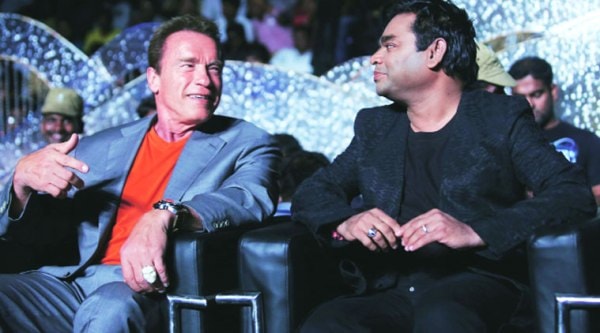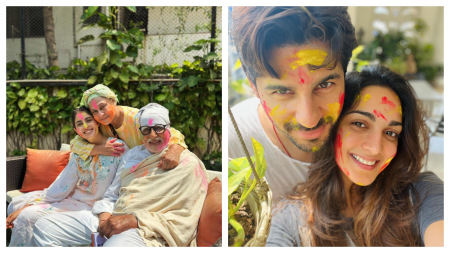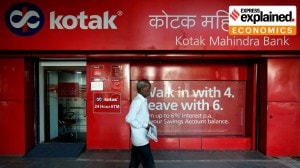- India
- International
Global role model
Big-budget regional films with broader themes are scripting better business economics, and the world is taking note
 Hollywood legend Arnold Schwarzenegger (left) with music director AR Rahman at the audio launch of the romantic action film — I —in Chennai recently
Hollywood legend Arnold Schwarzenegger (left) with music director AR Rahman at the audio launch of the romantic action film — I —in Chennai recently
By Bhama Devi Ravi
If you are wondering what business a Hollywood A-lister like Arnold Schwarzenegger had attending the audio launch of the Tamil film I in Chennai on September 15 — and saying, “I came all the way to India for a job interview. I want to act in your movies”— the answer lies in the fact that big-budget regional films with broader themes are scripting better business economics, and the world is beginning to take note. Kollywood, or the Tamil film industry, has long been known for its technical capabilities, but lacked a large enough target audience to make ambitious projects viable.
As per trade pundits, the market for a regular Tamil film (starring, for instance, Ajit, Suriya or Vijay) is usually one-third of a big Hindi film, while a Rajinikanth film dubbed in Hindi makes 75 per cent of what a big-budget Hindi film makes. The economic scenario changes dramatically when you look at a film globally instead of regionally. A Rs.100-crore collection is a big amount for a regional film. Only the big hits of Bollywood cross that number.
Bollywood actress Deepika Padukone made news when four of her movies grossed over Rs.100 crore last year. In this context, a Rs.500-crore collection would appear like a dream. But at today’s rate of conversion, Rs.500 crore is only a little over $80 million, which is not a very lofty number for a Hollywood hit!
Schwarzenegger himself made a pitch to Shankar, the director of I, at the audio launch of the film held in Chennai, “I want to do your next movie, Shankar. How about a King Conan?” Shankar nodded and gave a thumbs-up sign.
However, can Kollywood walk the talk? On an average, 120 Tamil films are produced every year, but only a handful of them are mega projects. With an initial outlay of Rs.150 crore, I is one of the big-ticket projects with a number of heavyweights associated with it, including producer Aascar Ravichandran, director Shankar and music maestro AR Rahman. A few years ago, Ravichandran had Jackie Chan as a special guest for the audio launch of Kamal Haasan-starrer Dasavatharam. For the uninitiated, Ravichandran is a movie mogul, who was immensely successful as the distributor of number of Hollywood blockbusters in India, including many of Chan’s and Schwarzenegger’s movies a few decades ago. He then forayed into film production in a big way. Trade analysts say he has serious plans of venturing into Hollywood at some point of time.
Shankar, on the other hand, debuted as a director in 1993 with Gentleman, which was a huge box-office hit. Within three years, he made Indian (Hindustani in Hindi) at double the budget of Gentleman, which was Rs.5 crore. A couple of years later, he cast Aishwarya Rai in the hugely entertaining Jeans, which was made at a cost of over Rs.20 crore. He then upped the ante on budgets with Sivaji: The Boss starring Rajinikanth. The film had an outlay of Rs.60 crore. He almost made a sci-fi movie with Shah Rukh Khan, but despite initial talks, the two could not reach an agreement, and the project fell through.
However, Shankar went on to make the film — the supremely slick Enthiran (Robot in Hindi) — with Rajinikanth and Rai in 2010. As per Deloitte, Robot made $12 million in the overseas market alone. Shah Rukh Khan subsequently came up with Ra.One in which Rajinikanth made a cameo appearance as a robot. In less than two decades of his foray into direction, Shankar has pushed the envelope, raising the bar on production values and emerged as yet another Tamil director to watch out for.
Regional films going national is not fresh news. Mani Ratnam’s Roja and Bombay readily come to one’s mind. In 2005, Shankar’s Anniyan (starring I hero Vikram) was dubbed in Hindi as Aparichit. By 2008, Aamir Khan had starred in the Hindi remake of Ghajini, while Salman Khan’s career got rebooted with films like Wanted, Ready and Kick, all remakes of Telugu and Tamil hits. In 2011, Ajay Devgn enjoyed a blockbuster hit when the Tamil film Singam was remade as Singham.
Meanwhile, the Telugu film industry was also in for a makeover and the game-changer was the hugely successful Magadheera. “The film collected Rs.70 crore in India and was the first film to cross the $5-million mark in the US,” says a trade analyst.
“Producers who had been wary of investing more than Rs.20 crore began to double their outlay. Actor Mohan Babu, who has a very strong market in the US ($1 million), had producers willing to invest even Rs.60 crore, which was not the case a few years ago,” he adds. In 2013, Attarintiki Daredi, starring Pawan Kalyan and Samantha, created waves, recording the maximum collection till date for any Telugu movie. There are whispers that Shah Rukh Khan is keen on remaking it in Hindi.
“It made $1.8 million in the US alone,” says a Telugu industry watcher. “In India, box-office collections are always debated, but that is not the case in the US. It is transparent. And now, Telugu producers have set themselves the target of breaching the $2-million mark,” he adds.
A forthcoming Telugu film that is generating a lot of buzz is the Rs.170-crore Bahubali, which is directed by SS Rajamouli and stars Tollywood heartthrobs Prabhas, Rana Daggubati, Anushka Shetty and Tamannaah. It is slated to release in 2015.
Taking the lead from Bollywood, Tamil and Telugu films have learnt to leverage their films better. They are also focusing and investing in global technology. For background art, prosthetics and certain other special effects in I, Shankar has roped in Weta Workshop, the New Zealand company renowned for their work in films like Hobbit and The Lord of the Rings. Two years in the making and set for a Diwali release, the original budget of Rs.150 crore would simply not have been enough to complete I.
Schwarzenegger’s one-day visit alone is likely to have cost a neat Rs.10 crore. As a salute to the tech-savvy youth, the target audience, regional directors are paying well for technology. Bahubali director Rajamouli had earlier made Eega, a film starring a house fly in the lead role. For Eega, he had outsourced quite a bit of post-production work to a Russian company.
The stakes are higher too. A Telugu film is not declared a superhit unless it crosses `50 crore at the box office. A film with a Rs.40-crore collection is considered just a hit. Clearly, budgets are getting bigger, production values are evolving to higher levels and the non-Tamil audience’s interest is intensifying because of target-specific marketing. The trailer of I notched a million views in less than 24 hours of its launch on the Internet. “That is bigger than Bang Bang,” says Sreedhar Pillai, a reputed film critic and trade analyst. He says Tamil films have learnt to leverage every avenue.
However, given that Tamil cinema has a limited audience capitalisation compared to Bollywood, can Kollywood make commercially viable films on a global scale? “Shankar has put together a film with a pan-international audience in mind. He already has the track record of a hugely successful director with every film of his turning into a box-office hit. The trade backs him. He typically makes larger-than-life hero-centric films with a social message without boring audiences. He is also a master at selling his stories. Arnie’s presence at the audio launch and the huge media and fan interest generated will enable the film to sell even better,” he adds.Maybe, this is the way to go.
Bhama Devi Ravi is a Chennai-based freelancer
Photos
Apr 24: Latest News
- 01
- 02
- 03
- 04
- 05









































